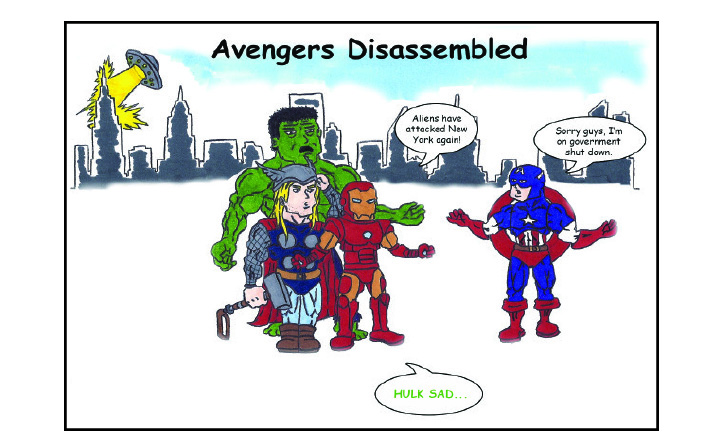EDITORIAL: Return Of Our Regularly Scheduled Government
U.S. Back In Business, For Now
Two kids are at a park – one wants to play baseball, the other wants to play soccer. They have the equipment to play either sport but only have enough room to play one or the other.
Rather than compromise and play a game of kickball, both kids sit in the middle of the field, too stubborn to make the most of their day. Meanwhile, other kids can’t use the field for any of their activities either – everyone loses.
Although there are millions of people affected and billions of dollars wasted, government shutdowns are not much different than the previous scenario. Shutdowns occur when a “funding gap” is created because Congress fails to pass, or chooses not to pass, a bill that funds government operations. Unfortunately, shutdowns are not new and likely will not be going away.
Since 1977 there have been 18 funding gaps that have resulted in government shutdowns. Shutdowns have occurred under both Republican and Democratic presidents, incited by both Republican and Democratic majorities in the House and Senate. Neither party has its hands clean of these unnatural disasters.
It has been 17 years since the last partial government shutdown. Partial government shutdowns occur when only portions of the government are temporarily closed, or services are temporarily suspended until a new budget can be agreed upon and passed through Congress.
While the length and severity of each shutdown varies, these man-made, all too frequent disasters cost U.S. citizens jobs, money and opportunities. The cost of these shutdowns is passed down to taxpayers.
While nearly 800,000 jobs are put on hold and citizens go unpaid for the duration of the shutdown, politicians typically keep earning their regular pay whether or not they show up to work. All the while, millions of people across the country are affected by the halting of many government services.
Research firm, IHS Inc., estimates the latest shutdown to cost the country nearly $300 million a day, for a total of $4.8 billion in predicted damages. Some government employees put on furlough will be back-paid for the time of closure, while contractors will add the period of inactivity to their expenses, raising the cost of government contracts for years to come.
The 16-day partial shutdown ended with an agreement to temporarily allow government funding to continue into early 2014 and allowed an additional $886 billion to the nation’s debt limit. This means the government continues along the path it was previously headed, now with added damages, backlogs and extended wait times for many government services including passport applications, benefit claims and loan requests. Also added to that list is a looming uncertainty that in three months the scenario will happen all over again unless politicians can learn to compromise.
Are these unneeded and costly shutdowns the new method of starting talks between the branches of government? If the public is being negatively affected by the shutdowns, is it not in the interest of politicians, elected to represent the populous, to invite and encourage negotiations and compromise in an effort to avoid these damaging and costly government shutdowns?
Early 2014 will show what, if anything, was learned from this latest shutdown. Also by that time, the economic repercussions will begin to take their toll as the full extent of damages becomes clearer to economists. In the meantime, we can hope the low poll numbers and general backlash from the public will encourage more compromising at the negotiating tables between now and next January.


